Pollution: forestry and mining operations
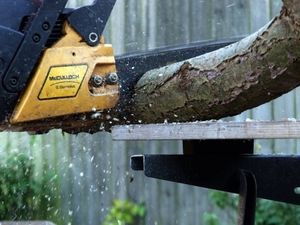
Contents
Forestry
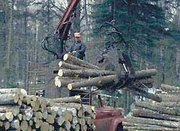
Forestry operations such as logging can generate significant amounts of nonpoint source pollution. The heavy machinery used to remove vegetation and trees exposes the soil, increasing the risk of erosion. In addition, the improper construction and use of “skid trails” – temporary paths used to transport logs out of the forest – can contribute to nonpoint source pollution (Nonpoint source). Skid trails that are constructed against the natural contour of a hillside are especially prone to erosion. However, use of fuel reduction through selective logging and dead wood removal is an important method of forest fire risk reduction.
Mining
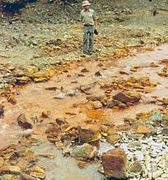
Active mining operations are considered point sources of pollution. But drainage or runoff from abandoned mining operations often adds to nonpoint source pollution. In strip mining, for example, the top layers of soil and vegetation are removed to reveal the desired ore. If an area where strip mining occurred has not been properly reclaimed after mining activities have ended (soil replaced and graded, vegetation replanted), erosion can occur. In addition, the mixing of air, water and sulfur-containing rocks can cause chemical reactions that lead to the formation of sulfuric acid and iron hydroxide. This acidic runoff dissolves heavy metals such as copper, lead and mercury. These metals, in turn, contaminate streams and other water bodies.
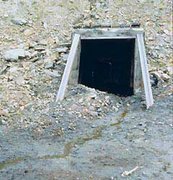
Abandoned subsurface mines can also contribute significantly to nonpoint source pollution. The water that seeps out of them can become very acidic. In Colorado, copper, zinc, and arsenic contamination from abandoned mines have affected several streams[1]. In the mid-Atlantic and Appalachian regions of the United States, acid mine drainage and associated contamination from abandoned mines have also affected water bodies[2].
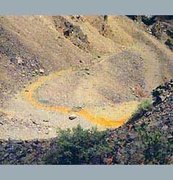
See Also
Citation
References
- ↑ U.S. Environmental Protection Agency (USEPA). 1984. Report to Congress: Nonpoint Source Pollution in the United States. Report No. 841R84100. Washington, DC: USEPA. 160 pp.
- ↑ U.S. Environmental Protection Agency (USEPA). 1984. Report to Congress: Nonpoint Source Pollution in the United States. Report No. 841R84100. Washington, DC: USEPA. 160 pp.